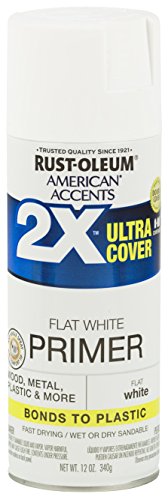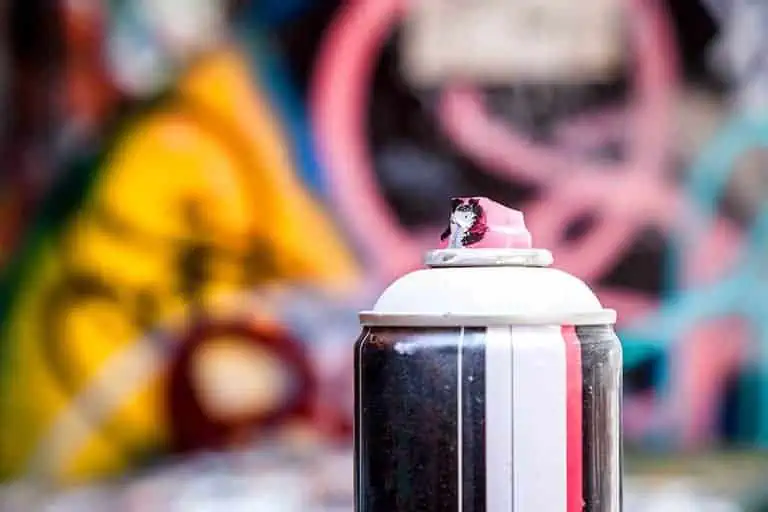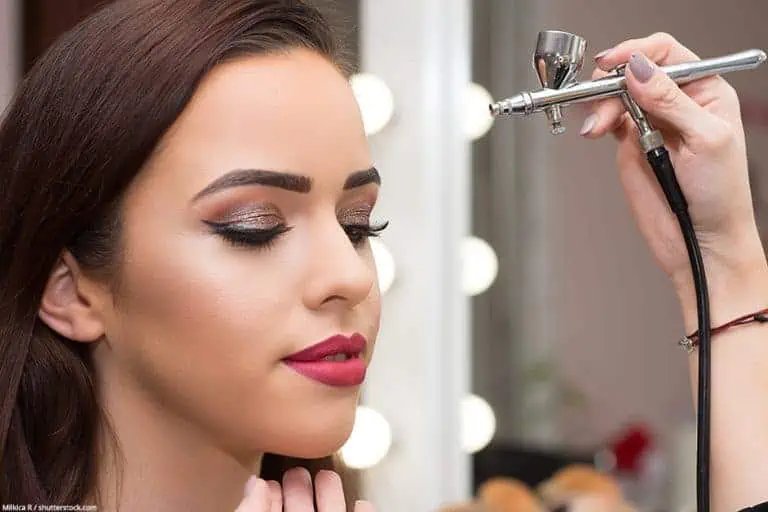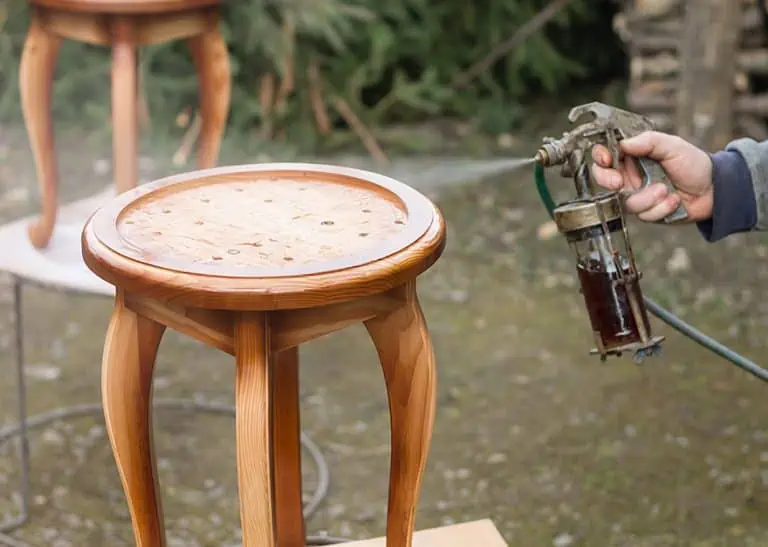Best Spray Paint Primer – Perfect Primer Spray Paint for Your Project
This post may contain affiliate links. We may earn a small commission from purchases made through them, at no additional cost to you.
Whether you are painting a beautiful artwork, a model, a wall, wooden furniture, or various other things, having the best spray paint primer will make a huge difference. Primer is required before starting most painting jobs, and a spray primer offers greater convenience and a smoother finish. If you are looking for the best spray paint primer for your next project, then check out our complete guide below for some buying advice and the top products out there.
What is a Spray Paint Primer?
Primer is a substance that is used to prepare surfaces for painting. You need to apply primer to difficult surfaces in order to increase their adhesion abilities. Primer can be applied to any painting surface, including canvas, metal, wood, resin, and others. You dont always need a primer, but it always helps to create a smooth surface for enhanced painting. The main purpose of using the best spray paint primer is to allow the paint to stick better to the surface. Primer also helps the paint to have a longer life and will reduce the risk of peeling or chipping. Spray primer is available in a range of different colors. The color you choose should depend on the type of colors you will be poainting with. Lighter primers work well with lighter paints and dark primers work well with darker paints. The most common primer colors are grey and white.
You will also need to choose a primer based on the type of paint being used, and the surface that you are painting.

Why Use a Primer?
If you start painting without applying a coat of primer, it could result in some very bad results. The paint might not properly stick to the surface, and it could easily get damaged or start fading away. Applying primer helps to increase the adhesion of various surfaces which makes the painting process more effective. It will also help to protect the paint from damage.
Primer is not always needed, and you can often get away without using primer spray paint. However, if you do use primer, these are some of the key benefits:
- Adhesion: The main purpose of applying primer is to increase the adhesion of the surface for the paint. This is particularly important for smooth surfaces that don’t naturally hold paint very well. This should be decided when considering the type of surface and type of paint used over that.
- Stronger coating: When applying primer, you have a better surface for the paint colors to come through stronger. If you want to get solid colors without any underlying colors or paints showing through, then a primer is a good idea. Applying primer lets the paint colors shine bolder and more clearly. This allows you to create a more striking artwork.
- Durability: Primer helps the paint to stick, but it also creates a stronger surface for maintaining and protecting the paint. Because the paint will hold better to the primer, the risk of peeling, chipping, or cracking paint is reduced. This allows you to enjoy a longer and more durable paint lifespan. Especially for painted surfaces that a outdoors and exposed to damaging forces, having the best spray paint primer underneath will add good protection.
- Easier painting: Primer spray paint also helps to make painting much easier. Thanks to the better level of adhesion, you can work faster with fewer issues. Colors come through stronger and there is less run or drip in the paint. This makes it easier to achieve your desired results.
Benefits of a Spray Paint Primer
You can apply the primer with either a paintbrush/roller or by spraying it on. When you spray the primer, there are many benefits to enjoy.
- A smoother finish: Primer spray allows you to get a perfectly even coating with greater ease. When you brush on primer, you can get brush marks, runs, and drips forming quite easily. However, a spray primer allows you to coat surfaces perfectly evenly. This is particularly useful for detailed surfaces and hard to reach places.
- Faster drying: A primer spray paint dries much faster than a primer that has been brushed on. This is because the coats are thinner. When you apply a primer, you will have to add a few coats for good results. Spray primer allows you to add more coats much faster thanks to this.
- Easy to use: The best spray paint primer is just easier to use. You dont have to worry about getting precision brush strokes and painting a perfectly even surface. There are no brushes to clean up, and the job takes quicker. A primer spray offers a far easier user experience.

Different Types of Spray Paint Primer
When considering which primer to use, there are many different options available. Choosing the right spray primer can be difficult because of this. When looking at primers, there are three different types to choose from. Underneath these categories, there are various different products.
Oil-Based Primers
An oil-based spray primer is a versatile option. These primers can be used over quite a wide range of surfaces, and are suitable for oil-based and latex paints. These can be used as a wood primer spray, or over metal, and any interior and exterior surfaces that have already been painted. The reason that this is a great wood primer spray is that it will seal the porous wooden surface. This stops any tannins that are in the wood from releasing and bleeding into the overlying paint. The primer will help to prevent peeling and blistering from occurring.
Oil-based spray primers are durable which makes them a smart choice for outdoor use. Another benefit is that they work very well in covering up stains and marks. However, it is not recommended to use an oil-based spray primer with water-based paint. They also take a long time to dry and can be quite toxic with high levels of VOCs.
Latex Primers
Latex primer is a water-based product that works well over many surfaces. This is one of the best spray paint primer options thanks to its ability to work well with acrylic and water-based paints. This primer can be applied to brick, concrete, unfinished drywall, softwoods, and galvanized metals. Compared to an oil-based primer, latex primer has some benefits. It is more flexible and less brittle, faster to dry, and is less prone to cracking and blistering. Being water-based, the formula is also safer and less toxic to use. Minor stains can be covered up with latex primer. Being water-soluble, this primer is also easy to clean.
Shellac Primer
Shellac primers have their strengths and downfalls. This type of primer works very well for blocking stains and covering up water and smoke damage. Besides blocking old stains, they also work very well for stopping new ones. Shellac primer can be used on wood, metal, plastic, and plaster. They also offer a wider variety of paint options, as they can be used with oil-based or water-based paints.
Shellac primer is super strong bonding and dries fast. However, this primer lacks versatility compared to other primers, and they emit pretty strong fumes which can be harmful. Shellac is also difficult to clean up.
The Best Spray Paint Primer
Now that you have a better understanding of primers, it’s time to take a look at some of the best options available. The primer you choose should depend on the kind of paint you are using, and the surface that you are painting over. We have highlighted three of the top choices below, suitable for a variety of projects.

Overall Best: ZINSSER BULLS Eye Spray Primer
This reliable primer by Rust-Oleum has always been the go-to choice for many painters. This is the best spray paint primer thanks to its versatility and strong bonding capabilities. The primer can be used indoors and outdoors over many different surfaces. It works great on concrete, drywall, masonry, wood, metal, and smooth glossy surfaces like resin. This is an oil-based spray primer that offers a high level of durability. It has excellent stain blocking resistance and dries to a smooth white finish. This makes it suitable for all paint colors. This primer seals very evenly and is easy to apply since so sanding is required.
- Oil-based formula seals uniformly and will Stick to surface without sanding
- Dries to the touch in just 30 minutes and covers up to 12 sq ft, interior and exterior use
- Provides a smooth, white finish, is designed to block imperfections with only one coat
The topcoat dries in 30 minutes, and only a single coat is needed to block oil and water stains. Each spray can primer can cover an area of around 12 square feet.
PROS
- Suitable for many different surfaces
- Superior stain blocking capabilities
- Fast drying
- Dries to a smooth white finish
- Easy to apply in even coats
CONS
- An oil-based primer, so not suitable for some paints
Best Value for Money: RUST-OLEUM Painters Touch 2X Ultra Cover Primer
This is an oil-based primer spray that offers excellent versatility and adhesion. The spray can be used on wood, plaster, plastic, metal, unglazed ceramics, and masonry. Finding a good plastic primer spray paint isn’t always easy, but this one works well. The formulation is suitable for both indoor and outdoor use, and it provides solid long-lasting protection. This primer spray paint only takes about 20 minutes to dry to touch for easy application. The finish provides some great hide and offers an appealing smoothness. This primer dries to a flat grey, which is a good neutral choice for all paint colors to be applied over. For an excellent value primer, this product is odor-free, durable, and easy to apply to a smooth finish. One spray can primer can cover about 12 square feet.
- Oil-based formula is a low odor, resist chips and provides long-lasting protection
- Dries to touch in 20 minutes and covers up to 12 sq. ft. per can
- The durable formula provides excellent hide and goes on smoothly
PROS
- Works well on a wide range of surfaces
- A durable oil-based formula
- Fast-drying
- Great smooth finish
- Easy to apply
- Good value for money
CONS
- Can’t be used with all types of paints
- Quite a thick primer, so the spray nozzle can get clogged if not cleaned properly
Best Premium: RUST-OLEUM American Accents Spray Paint Primer
Rust-Oleum is certainly the brand to look out for when choosing the best spray paint primer. This product is one of the best choices available when it comes to preparing difficult surfaces. This would be our best plastic primer spray paint option, but it also adheres well to metal, wood, plaster, wicker, unglazed ceramics, and plenty more. This is a good product for both indoor and outdoor use. The primer dries to touch quickly, making it faster to apply many thin coats. The spray finish also goes on evenly, with a smooth and ready-to-paint surface. The primer offers strong durability, full coverage, and allows for very vivid coloring. The primer color is white which is suitable for all paint colors.
- Ideal for interior and exterior use on any surface including wood, plastic, metal, etc.
- Dries to the touch in 20 min and covers up to 12 sq. ft. for quick project completion
- Superior durability with smooth, full coverage and vivid color
PROS
- Superior durability
- Works well on many difficult surfaces
- Quick to dry
- Offers great coverage
CONS
- Lightly textured, so not a completely smooth finish
- A more expensive primer
How to Choose the Best Spray Paint Primer
Primers are not all made equal. Choosing the best spray paint primer should depend on the specific job at hand. The type of paint you use and the surface you will be painting over are the two most important considerations.
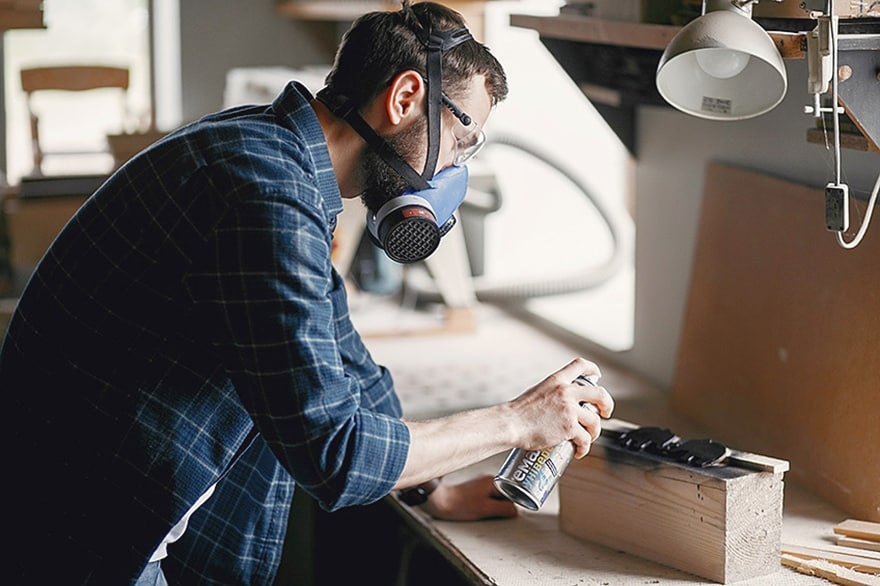
Spray Primer vs Paint On
The first thing to decide when using a primer is whether you will spray it on or paint it on. Some primers are available in a can that can be applied with a brush or foam roller. This offers you a nice thick coating and is good for application over a large flat surface. The downsides are that painting on a primer like this makes it harder to achieve a perfectly smooth and even coating. You can get brush marks forming, and applying the primer over detailed areas can cover up some details. The best spray can primer is easier to apply. This type of primer helps you to get a more even coating. It is faster to spray on primer, and the layers are thinner which dries faster. If you will be painting a small object, something detailed, or consisting of many curves and lines, then a primer spray paint is best.
The Type of Paint
The next consideration comes down to the type of paint that you will be using. As a general rule, the primer should match your paint. For example, an oil-based primer should be used with oil-based paint, a water-based primer for water-based paint, and so on. This allows the paint and primer to bond properly together.
Choosing paint and primer from the same brand is often a good idea. Always check the primer’s instructions to see if it is compatible with your paint type.
The Surface
When choosing the best spray can primer, you will need to make sure that it is suitable for the type of surface that you will be painting over. Different surfaces are suitable for different primers, so be sure to choose a product that is compatible. A wood primer spray may be completely different from a plastic primer spray paint. Always check to see if the primer you choose works with your surface.
Covering Stains
Sometimes you will be painting over a surface with dark stains on it. If this is the case, you should use a stain-blocking primer to prevent these marks from coming through on the paint finish. Oil-based primers are best for this.
Choosing the Color
Primers are available in a wide range of different colors. The color that you choose should depend on the color of the paint you will be using. Lighter primers suit lighter paints and darker primers suit darker paints. Otherwise, a neutral grey or white primer will work well with any paint colors.
Applying a Spray Can Primer
The best spray paint primers are very easy to use, allowing you to get an even finish with minimal effort. While the application process may differ between products and surfaces, there are a few basic steps to follow.
- Start by getting your surface ready for the primer. Depending on the surface, you may have to sand it down a bit for a smooth and even finish. Generally, primer cannot be applied over existing finishes on many surfaces. For this reason, you should try to get the surface bare. Old wood may need some sanding to get the wood smooth and ready.
- Now it’s time to clean the surface. Make sure that the surface is completely cleaned and dried before adding the primer. This will help with adhesion, and avoid any unwanted dust or dirt from getting trapped underneath the primer.
- When the surface is ready, you can start to apply the primer spray. Hold the primer spray paint at a set distance from the surface and start to spray it on. You can do a test spray on a piece of paper first to make sure that it is spraying well. When you start spraying, be sure to maintain a steady spray movement. If you stop to spray at one point, you will get a buildup of primer in one spot. This can cause drips and runs.
- Leave the primer to dry, then you can apply the next coat. Sometimes, people will sand down the dried coat of primer for better adhesion. Continue applying even coats of primer until you reach the desired thickness and finish. Usually, this is around 3 – 4 coats.

Frequently Asked Questions
How Long Do You Let Spray Primer Dry?
This depends on the product use, air temperature, and amount of primer applied. Generally, the primer will dry to touch in about 20 – 30 minutes, which means you can apply the next coat. Sometimes it takes around an hour for primers to dry.
How Long Before You Can Paint Over Primer?
Usually, the primer is dry to touch after about 30 minutes, which is when you can start to paint. Be sure to check the manufacturer’s guidelines on this.
Can You Spray Primer in a Sprayer?
The primer can be sprayed in a sprayer, but it will likely need some thinning. Primer is quite thick, so try to thin it out first to reach the right consistency. Just be careful not to alter the primer too much.
Using the best spray paint primer offers plenty of benefits. This can help to make any painting job easier, and it will provide enhanced end-results. We hope the guide above has helped you to find the best spray paint primer for your needs.
In 2005, Charlene completed her wellness degrees in therapeutic aromatherapy and reflexology at the International School of Reflexology and Meridian Therapy. She worked for a company offering corporate wellness programs for several years before opening her own therapy practice. In 2015, she was asked by a digital marketer friend to join her company as a content creator, and it was here that she discovered her enthusiasm for writing. Since entering the world of content creation, she has gained a lot of experience over the years writing about various topics such as beauty, health, wellness, travel, crafting, and much more. Due to various circumstances, she had to give up her therapy practice and now works as a freelance writer. Since she is a very creative person and as a balance to writing likes to be active in various areas of art and crafts, the activity at acrylgiessen.com is perfect for her to contribute their knowledge and experience in various creative topics.
Learn more about Charlene Lewis and about us.


